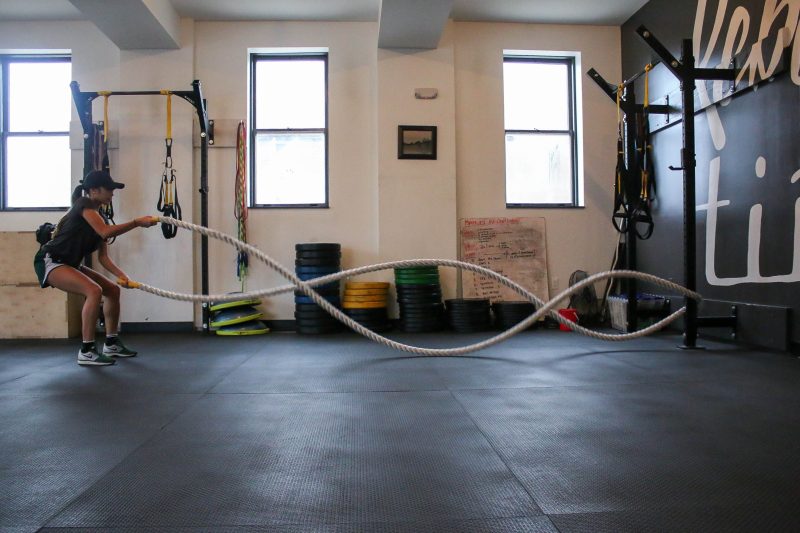The debate over whether cable machines are comparable to free weights has been a topic of discussion among both fitness enthusiasts and exercise professionals. The two can assist with muscular definition and strength development, but each has advantages that the other does not have. Choose and determine by one’s preference and training objectives the type of strength training equipment. According to StraightHealth.com, the ideal regimen would include both machines and free weights for each muscle group. They each have their own set of talents and shortcomings, so combining the two will give you the most out of both. Now, what is a freemotion cable machine?
Table of Contents
Freemotion Cable Machines

Freemotion cable machines have a stack of weight that is interconnected using cables to pulleys and cams, which only move in one direction. If you’re trying weight lifting or working out on your own for the first time, cable machines are a great way to tone muscles. Cable machines isolate one muscle group at a time and offer extremely regulated movement. Cable machines are an excellent choice for serious weight training, but they’re also great for novices, seniors, and casual athletes.
The free-motion cable machines are simple to use and provide you with good techniques. For a rigorous workout, you may isolate one muscle at a time. You can achieve a fluid movement with proper form across the full range of motion via machines. You’ll spend less time getting ready, adjusting, and storing the weights. When compared to free-weight exercises, machines are safer. There are several drawbacks of equipment. Freemotion cable machines isolate muscles and some may become stronger while others weaken. Real-life lacks things like adjusting, balancing, and supporting your body; therefore, cable machines are ideal for strengthening specific muscle groups without overworking the smaller ones that would normally perform these functions in real life.
Benefits Of Freemotion Cable Machines
- It’s easier to learn (easier to stabilize) and more agreeable for some lifters.
- More stable, therefore more prime mover activation
- Suitable for targeted, more isolative exercises.
- Patients who have sustained an injury or condition can benefit from the utilization of a fixed bar path.
- Variable resistance machines (ex: CAMs, plate-loaded, etc.) use varying levels of resistance to affect the muscles continuously.
- There are no spotters required.
- It can also be used to create distinct motor patterns (for example, the Smith machine for more upright squatting).
- To concentrate on the legs, you can eliminate spinal stability (for example, leg press, flat-out squatting).
- After heavy barbell lifts, when the stabilizers are weary, this move may be done to further tax the primary movers.
- The elderly can benefit from it.
- The smith machine may be utilized for ballistics (for example, bench throws)
- Isokinetic dynamometers are ideal for recording data and eccentric or isometric training.
- Ideal for beginning rehabilitation.
- They are self-sufficient (no further equipment is required).
- Beginners with little confidence in free weights may find it useful.
- This is a milder variant of circuit training.
Disadvantages Of Freemotion Cable Machine
- It’s more expensive to buy and maintain.
- May have unpredictable pathways that might cause pattern overload.
- Certain equipment doesn’t feel right for particular body types.
- Not always portable and takes up extra room in your room.
- Less versatility and variety.
- Chronic injuries have a significantly higher rate.
- Left/right imbalances are more likely.
- Advanced individuals may not be able to use weight stacks because of their size.
- Aren’t always ideal for tall or short lifters.
Free Weights

One or two dumbbells, a barbell, weight plates, or a medicine ball or kettlebell are common equipment in free weights workouts. Free weights are cables, pulleys, pins, and weight stacks-free. The term “free weights” refers to the absence of cables, pulleys, pins, and weight stacks in the exercise. The most crucial component of free-weight usage is to master each movement’s technique.
Free weights are more cost-effective than machines. Since a single set of barbells may be used in a variety of workouts and training programs. To develop balance and hand-eye coordination, you must first have a foundation in weight lifting. The entire body, including the brain’s central nervous system, must be engaged to create equilibrium and hand-eye coordination.
Muscle Monthly claims that seasoned weight lifters may want to utilize extra free weights. This is so due to their flexibility and include the machine as part of their routine or for certain exercises. Free weights necessitate the use of more than one muscle group for each movement, as is the case with resistance bands. You’ll be using your control throughout your exercises, and it’s crucial since it helps to condition your muscles. The major disadvantage of free weight usage is that you are more likely to get hurt. If you use poor form when lifting, the weights will put pressure on your body, which might lead to harm. The bigger the weights you lift, the more essential a training partner or spotter becomes.
Benefits Of Free Weights
- Unstable (fewer degrees of freedom) = greater stability function (proprioception, balance, sensorimotor coordination, etc.)
- There are natural bar pathways to follow.
- More cost-effective.
- These are more suitable for complex, highly integrated lifts.
- More precise to powerlifting and Olympic weightlifting.
- More versatile, and with a lot of options.
- It’s small and light enough to carry around.
- Barbell lifts may be more metabolically demanding than bodyweight exercises.
- Bands and chains (accommodating resistance) work well with it.
- Appear to be more readily transferred to equipment than free-weight strength is.
- They better represent real-life movement patterns than most machines (for example, leg press, knee extension, and calf raise).
- A less flexible, but more durable ballistics material. Suitable for lower body ballistics (ex: jump squats).
- Perfect for increasing spinal strength and stability.
Disadvantages Of Free Weights
- More severe cases of injury are on the rise.
- Certain lifts are difficult for some body types.
- Spotters or rack supports are required for some lifts.
- Not always ideal for rotary or lateral vector movements.
- The closer your technique is to sloppy form and contorting the body in order to lift, the higher its effectiveness.
- Strong lifters may have a hard time loading and unloading plates.
- Some lifters become reliant on momentum to get the job done.
- Some lifts have torque-angle curves and strength curves that focus on a specific ROM but lighten up at the opposite one (squats, good mornings)
Safety
The most crucial rule in any training program is safety. Make sure you’re learning and executing good form; this is essential for a successful workout. You must focus and keep your attention on what you’re doing. Always secure the barbell with weight clamps at both ends. If you’re uncertain, use a spotter. Always keep safety in mind.
To know more about weight loss tips: benefits of doing 100 jumping jacks a day click here.







